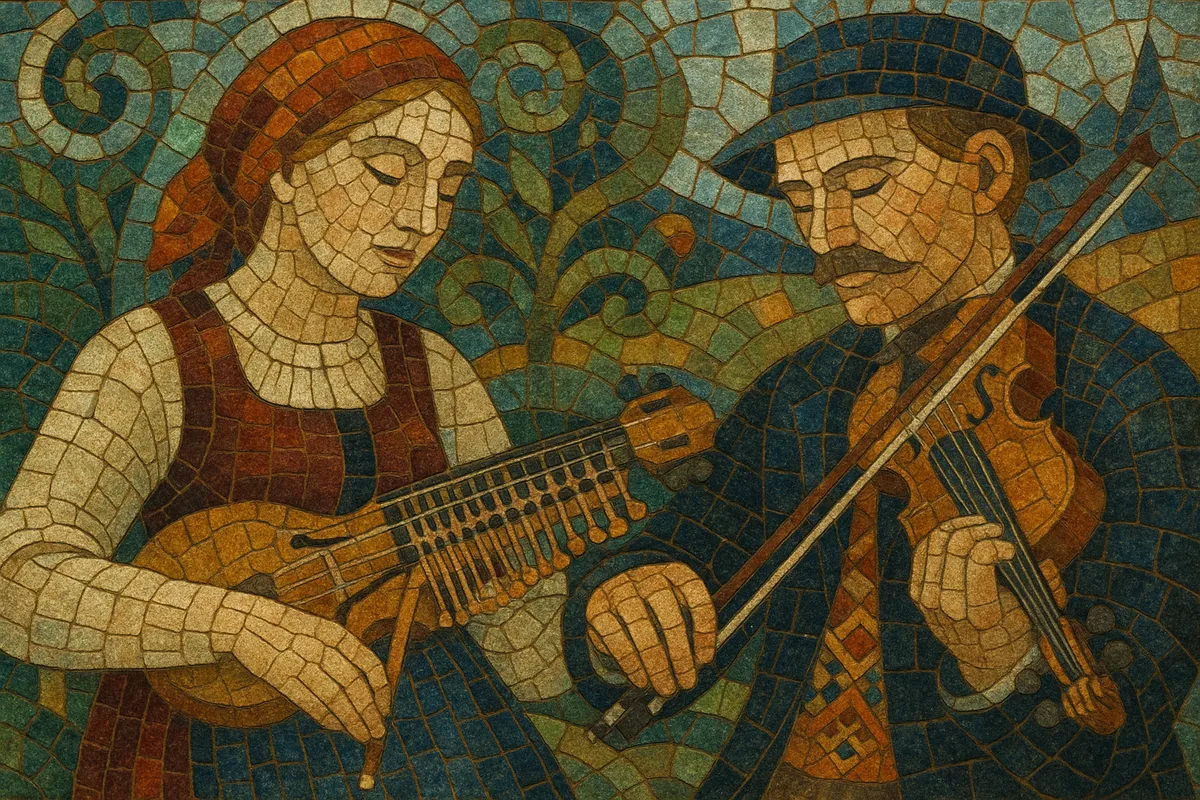Swedish folk music is the traditional music of Sweden, centered on regional dance tunes, herding calls, and narrative songs preserved by rural spelmän (folk fiddlers) and singers. Its core sound features fiddles and the nyckelharpa (a keyed fiddle), often played solo or in tight duet, with drones, double-stops, and subtle ornamentation.
The repertoire is dominated by dance forms such as the polska (an asymmetrical triple-time dance), schottis, polka, hambo, waltz, and gånglåt ("walking tune"). Vocal traditions include visor (ballads) and kulning (high, piercing cattle-calls from summer pasture culture). Melodically it favors modal colors (Dorian, Mixolydian, hexatonic variants) and a distinctive lilt and swing, especially in polska rhythms. Regional styles from Dalarna, Hälsingland, Uppland, and Jämtland are especially renowned, each with characteristic bowing, phrasing, and ornamentation.
While much of the tradition is centuries old, a 20th‑century revival professionalized performance and pedagogy, bringing Swedish folk music to concert stages while maintaining strong links to community dances and spelmansstämma gatherings.
Swedish folk music emerged out of rural communal life from at least the 1600s–1700s, with village spelmän (fiddlers) supplying music for weddings, midsummer festivities, and rowdy dances. Tunes circulated orally and regionally, shaped by local bowing styles and dance practices. Courtly and continental influences in the 17th–18th centuries (notably Polish and other Central European dances) mixed with older Nordic melodic habits, producing uniquely Swedish triple-time forms such as the polska.
The fiddle became the dominant melody instrument by the 18th–19th centuries, joined by the nyckelharpa in Uppland (a keyed fiddle with sympathetic strings) and later by accordion/diatonic accordion (durspel). Vocal practices ranged from narrative visor to kulning, the pastoral calling tradition used to project over long distances.
During the 1800s and early 1900s, folklorists and collectors began notating tunes and recording master spelmän, anchoring the repertoire in print and early sound media. Legendary local fiddlers (e.g., Byss-Calle, Lejsme Per, Hjort Anders) shaped regional canons, while large dance gatherings and competitions fostered stylistic identity.
From the 1960s–70s onward, a revival movement revitalized dance culture and performance. Eric Sahlström modernized and promoted the chromatic nyckelharpa, and organizations, festivals (Bingsjöstämman, Ransäterstämman), and the Eric Sahlström Institute institutionalized pedagogy. Bands like Hedningarna, Frifot, Väsen, and later Garmarna and Hoven Droven brought the tradition to international audiences—some blending it with rock, contemporary folk, and experimental textures—while dance halls and local spelmanslag (fiddlers’ ensembles) kept social dance central.
Contemporary Swedish folk music thrives in both community and conservatory settings, balancing historically informed styles with new composition, cross-genre collaboration, and a living dance scene that sustains the music’s pulse.


